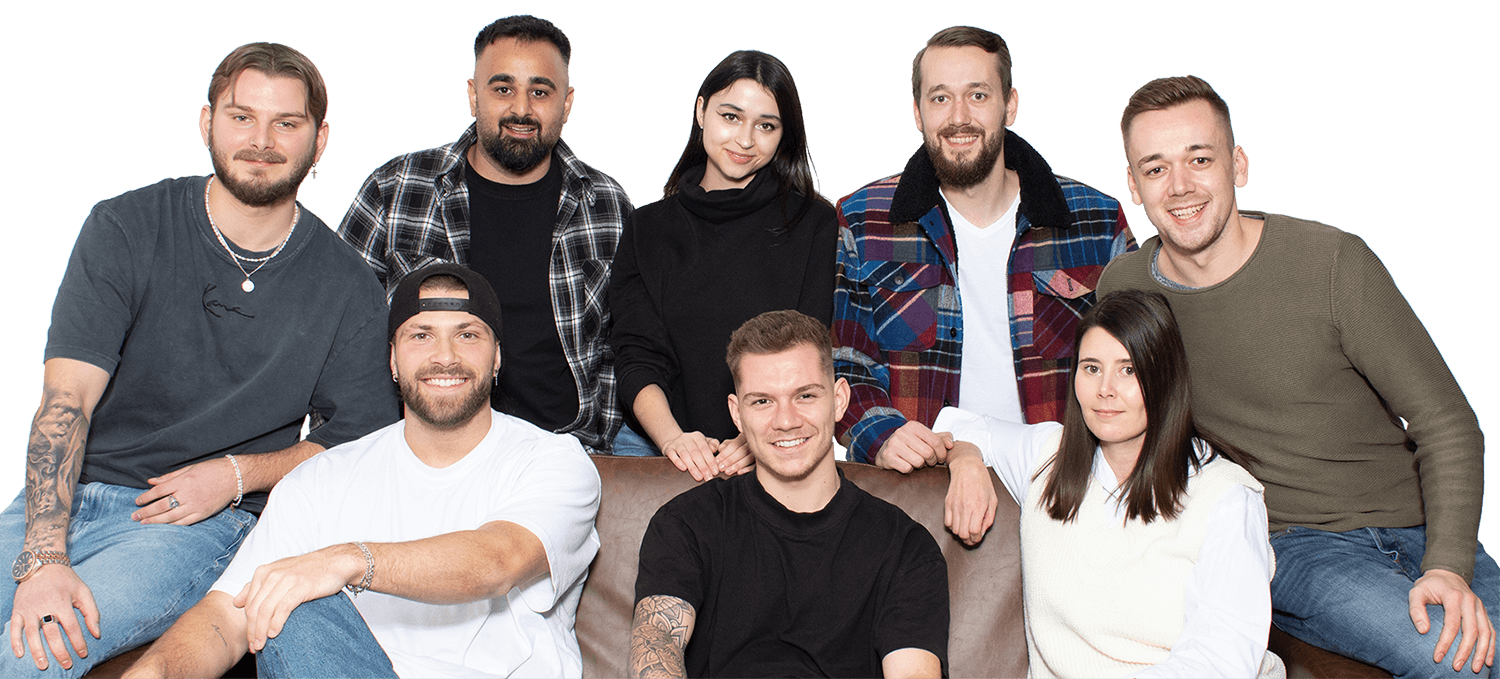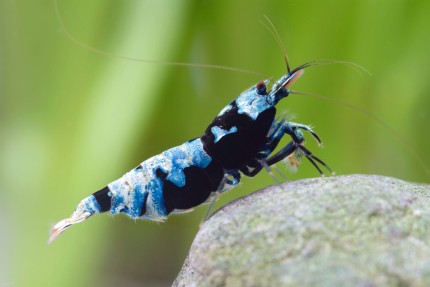incl. VAT plus shipping costs
Currently not available
Delivery only innh. Germany and Austria possible.
Switch to the German store
- Item no: 8331
Fast delivery times
All products are in stock with us!14 years of breeding experience
Let our team of experts advise you!High customer satisfaction
from over 3,000 reviews "| Origin: | South America |
| Pelvic region: | Center |
| with dwarf crabs?: | No |
| Difficulty: | 1 - Simple |
| Final size: | 4-8 cm |
| with shrimps?: | with dwarf shrimps, offspring is eaten |
| with snails/shells?: | Yes |
| Planting possible?: | Yes |
| Visual effect: | Especially colorful |
| Diet: | omnivorous - omnivorous |
| Fish group: | Tooth carp |
| Breeding: | simply |
| Aquarium size: | 54 l (approx. 60cm) |
| Water values: | Medium hard water |
| Temperature: | 20-25 °C |
The Arctic Blue Guppy is a great color variation of the Poecilia reticulata native to South America. From an aquaristic point of view, guppies are true evergreens, which almost everyone has kept and bred at least once. Since it can also be bred wonderfully, it got the nickname "million fish" and also has a high fan circle of lovers. To counteract uncontrolled reproduction, you will receive a pure male group here. In the store you will also find Guppy females, if you decide to breed these great animals.
However, the pure same-sex male group will not fail if there are no females in it. Above all the consideration of the accommodation of the innumerable young fish is void. In addition, the animals are not under constant stress due to constant courtship and competition, which is why they can even live a little longer.
Arctic Blue Guppies almost steal the show in the aquarium, especially when they swim back and forth just below the water surface under the lighting. They owe their name mainly to their striking and wonderfully colored arctic blue caudal fin, which is fringed with orange. Their bright bodies sparkle and glisten in places- depending on the light.
The males are visually distinguishable from the females by their intense coloration alone. They also have a "pen-shaped" anal fin that has been converted to a mating organ, which in females is more reminiscent of a sail. Guppies actually court all the time, the female can store the male's semen for a while after mating and fertilize herself several times. Therefore, even in pure female groups, young appear from time to time. Almost every 3 weeks, the female releases 20 to 40 live young that have developed in eggs in her abdomen. Therefore, they are counted among the live-bearing toothcarps. Guppies prey on their offspring, so the aquarium should have fine finned plants in which the young can hide. With our YoungFeed they can be fed and raised very well.
At least 60 cm edge length should already have the aquarium for the Arctic Blue Guppies. Since these lively animals are constantly in motion, they need a lot of swimming space. However, a dense and compact planting should not be neglected, because they like to retreat here to rest. Although the Guppy is quite undemanding as far as the further interior decoration of its new home is concerned, roots and stone structures secured against falling over nevertheless serve for further retreat possibilities, but also as visual protection. Its water should be medium hard.
Since the Arctic blue Guppy is very closely related to the Endler Guppy, they can produce fertile hybrids, they should better not be kept together. However, great by-fish would be for example Tetras, Platies, Mollies, but also Loricariids or Corydoras. In a community aquarium the Arctic Blue Guppy brings life by his lively kind in the booth, with his color he immediately catches the eye. Well reproducing dwarf shrimp such as Neocaridina can also be socialized with him, however, it can happen that a young one is sometimes eaten. With mosses and fine plants the shrimps can be offered good retreat possibilities and hiding places. Dwarf crayfish are not suitable, as they can pinch the soft fins of the guppy. Fins injuries heal under circumstances only slowly and quite badly.
The Arctic Blue Guppy is an omnivore, which can be fed unproblematically in the aquarium with almost every available dry food like flake food but also granulated food for omnivorous ornamental fish. They also occasionally nibble on coverings and thus keep algae somewhat in check. Scalded vegetables such as cucumber, Peppers or Pumpkin can be offered to them from time to time, they will also nibble on these. With live and frozen food such as Artemia, Daphnia cyclops can spice up their menu.
Our food recommendation NatureHolic Guppyfeed is a fine soft granulate with 0.5 mm grain thickness, which is suitable as a staple food for all aquarium fish and especially for guppies. The soft consistency of the food beads is reminiscent of that of natural insect larvae. It protects the sensitive fish mouth from micro injuries caused by hard or sharp-edged food. In addition to animal food, guppies also need a vegetable component in their diet. As special additives we add garlic extract and the leaf powder of the miracle tree Moringa olifera to NatureHolic Guppyfeed. These herbal additives are attributed positive effects on the immune system and the colorfulness of the colorful fish.
Our plant recommendation: For planting, use NatureHolic InVitros. These are free of snails, planaria and other unwanted co-inhabitants. Also free of algae spores, bacteria and fungi.
Expert Tip: We recommend for fish keeping the NatureHolic 3 Phase Liquid. The care set offers the best all-round protection for your animals. It ensures optimal conditions for successful breeding and keeping.
| Scientific Name: | Poecilia reticulata |
| German Name: | Guppy Arctic Blue |
| Difficulty level: | for beginners |
| Origin/Distribution: | South America |
| Coloration: | Arctic blue caudal fin, forebody rose golden iridescent |
| Age expectancy | approx. 5 years |
| Water parameters: | GH 10 to 25, KH 5 to 20, pH 7 to 8.5, temperature 22 to 28°C |
| Tank size: | 54 l and up |
| Food | Omnivorous, needs flakes and granules as well as very fine frozen food or live food, also likes soft vegetables or green food |
| Breeding | very easy |
| Behavior | very peaceful |
| Group size | Groups of at least 10 animals |
| Further information | Ten typical aquarium fish for beginners and alternatives to them, Tips for acclimating fish to the aquarium, Feeding aquarium fish properly - cheap food and what it can do |
- Item no: 8331
Entdecke die Garnelio Welt!
Garnelio gehört zu den größten Onlineshops für wirbellose Aquarientiere weltweit.
Viele Artikel gibt es exklusiv nur bei uns im Shop.













































